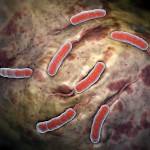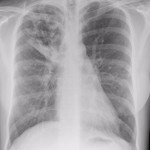Cholera is an infectious illness, found only in humans, caused by a bacteria in contaminated water, leading to severe diarrhea and dehydration and capable of killing its victims in a matter of hours if untreated. When I read about the disease for the second time in decades (the first time was after a 21st-century epidemic in Haiti), I was amazed at how quickly a victim can lose 10% or more of their body weight in severe cases; e.g., eight quarts between my normal bedtime and when I usually wake up. Many people who ingest the bacteria don't develop any symptoms, but if they do and lack modern re-hydration therapy, their chance of dying is 40-60%.
In all likelihood it is an ancient disease with writings from the lifespan of Buddha (563-583 BCE) and from the time of Hippocrates (460-377 BCE) revealing diseases that presumably were cholera. It has, over the last several hundred years, been a major killer of mankind, causing millions of deaths in the 19th century. Those numbers place it among the deadliest of infectious illnesses, in the company of smallpox, the Spanish flu, bubonic plague, AIDS and malaria.
A CBC News article online with the title "Cholera's Seven Pandemics," starts with a major outbreak in India near the Ganges River delta. Between 1817 and 1823 there were 10,000 deaths among the British soldiers stationed in that country, estimates of hundreds of thousands of fatal cases among native Indians and 100,000 dying in Java in the year 1820. The second pandemic began in 1829, again in India, and spread to Russia, Finland, Poland, England, Ireland, Canada, the U.S. and Latin America, before another outbreak in England and Wales that killed 52,000 over two years. The sixth pandemic killed more than 800,000 people in India alone and, over the next 24 years swept over parts of Europe, Russia, northern Africa and the Middle East.
The National Library of Medicine's website entry on cholera associates it with crowding, poor sanitation, famine and war. India has remained a source as the disease is endemic (ever present) there. People get cholera by eating or drinking either contaminated food or water; the medical term is the fecal-oral route.
In the summer of 1854 London was the epicenter of a deadly outbreak. Dr. John Snow, a famous British physician born March 15th, 1813, had been noted as a pioneer in anesthesiology, using chloroform to assist in Queen Victoria's delivery of her eighth child in 1853.
Then, as documented in the book, The Ghost Map by Steven Johnson, Snow turned his investigative talents and keen mind to cholera, becoming in the process the modern father of epidemiology.
London's population had grown immensely and its sewage system was antiquated. In addition to basements filled with excrement, cesspools and drainage into water sources were rampant. A major concept of disease causation was the miasma theory. The term means "bad air" and the assumption was illness was caused by the presence in the air of a miasma, a ill-smelling vapour containing suspended particles of decaying matter .
In a painstaking and extremely clever investigation, Snow had, in a prior cholera outbreak in 1849 which was responsible for a dozen deaths in flats in a slum area, shown that two separate sets of milieu had markedly differing death rates. All environmental parameters were essentially identical in the two groups with one exception; where they obtained their water. The group who suffered a much higher rate of illness got theirs from a company whose river source was in the same area where many sewers emptied.
Five years later a much larger cholera epidemic provided an opportunity to more closely examine the water sources of the victims. One particular pump, seemingly providing clear water, proved to be the culprit. The Broad Street pump's output was examined by a Snow's colleague, a skilled microscopist Dr. Arthur Hassall, and found to contain what Hassall believed to be decomposed organic matter with oval-shaped tiny life-forms felt to be feeding on that organic substance. Snow was not aware then of the 1854 work of an Italian scientist, Filippo Pacini, who had examined the intestines of patients dying from cholera in Florence and found a comma-shaped bacillus he termed a Vibrio.
The proponents of the miasma theory did not yield easily, but Snow's map of the location of deaths from cholera eventually let his hypothesis of a water-borne illness prevail. Then an assistant curate (church figure in charge of a parish) named Henry Whitehead who had read Snow's papers on the epidemic eventually found the index (first) case, a baby Lewis. As a result, the Broad Street pump was excavated and a direct connection to a cesspool was found.
The juxtaposition of Snow's scientific data and Whitehead's work as a beloved neighborhood figure led to the local Vestry Committee's report endorsing the water-as-culprit theory.
The city subsequently launched a major project to carry waste and surface water away from Central London.
Five years later, he














